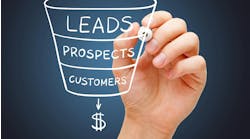Plumbing contractors charge for repairs and also to respond. The response charge may be referred to as a service call, trip charge, truck charge or diagnostic charge. Optimizing your response charge can make a huge impact on your bottom line.
The response charge is not only an important element in company profitability, it is a marketing tool. It is your most visible price. It’s the one price you can safely quote over the phone.
Essentially, there are four main response charge strategies.
Low opening price: You can make your response charge a token amount, say $29. This is not enough to impede anyone from using your company, yet it gives you a low opening price to quote over the phone.
Quoting a low opening price is a retail strategy. Every big box store, from DIY to toys to mass merchandise promotes a low price for select items to lure people into the store. Your low opening price serves the same purpose.
It’s difficult for consumers to compare prices on flat rate repairs when the nature of the repair is unknown until a plumber looks over the work. It’s easy to compare response charges. By readily quoting a low opening price, you are signaling to consumers that you are price competitive. And your response charge is price competitive!
Promotion: Give away coupons and gift certificates that match your response charge. For example, you might charge a $49 response charge and freely give out $50 gift certificates or coupons.
The coupons or gift certificates encourage trial. A consumer may not prefer one plumber over another, but she does have a coupon. Who gets the call?
Obviously, the promotion approach only works if you market your company. You need to get the discount into as many people’s hands as possible. To lock in future work, send customers bounce back coupons or leave coupon magnets with them.
Load management: Load management means controlling demand to match supply. During certain times of the year, demand for your services exceeds your supply. You simply cannot cover all of the calls, which means you are leaving money on the table.
Hotels charge more when demand is highest and the hotels are full. Like the hotels, you should charge more when your job board is full.
Raise your response charge whenever demand picks up. Charge more for same day service, little less for two to three day service, and a lot less (if anything) when the consumer can wait until you have an opening. Ideally, you will set your same day response charge just high enough to fill the day. This means you will have maximized revenue.
An essential benefit of a load management approach is customers self-identify themselves as people who will pay a premium for better service, people who will accept a little delay to save a few dollars, and people who want the lowest price. Market continually to the first group, less often to the second, and not at all to the third.
Service agreement benefit: Service agreements customers are your most loyal customers. Essentially, they have agreed to do business with you exclusively for a pre-determined period of time in return for set benefits. These benefits can include a free response charge.
Capture calls: Some consumers have more time than money, so to save a little money, they are quite willing to waste your time. Some will get estimates from several companies. Others will let your plumber figure out their problem and then attempt to do it themselves. You can solve this by waiving your response charge if the homeowner proceeds with the repair.
Credit the homeowner the amount of your response charge towards a repair. This shuts down price shopper since the homeowner won’t know if the next guy will have a response charge and may charge even more for the repair. The homeowner is price shopping in the first place because he is cheap. Now the cheapest solution is to proceed with you.
Unfortunately, crediting the response charge towards a repair may not stop DIY guy. However, it will ensure that you get something for sending a fully stocked service vehicle and plumbing professional to his home. Something is better than nothing.
A word of caution: Your response charge might be subsidizing your service pricing. For example, a plumber charging $75 per hour with a $75 response charge may rush through calls, taking an average of a half hour per call. That’s $37.50 ($75/hour X 30 minutes) plus $75, or 112.50 for 30 minutes. That’s an effective hourly rate of $225 per hour. If this plumber lowers his response charge without raising his hourly rate (or the hourly rate in his flat rate pricing), he may move from profitable to unprofitable.
Before adjusting your response charge pricing, make sure you are correctly allocating all of your overhead against your service pricing. Price so that you do not need a response charge, then you are free to adjust your response charge to drive more revenue to the top line and profit to the bottom line.
Matt Michel is CEO of the Service Roundtable and author of “The Power of Positive Pricing.” Learn more about the Service Roundtable by calling 877.262.3341 and asking a Success Consultant for a free tour. To buy “The Power of Positive Pricing,” visit http://Shop.ServiceRoundtable.com.

